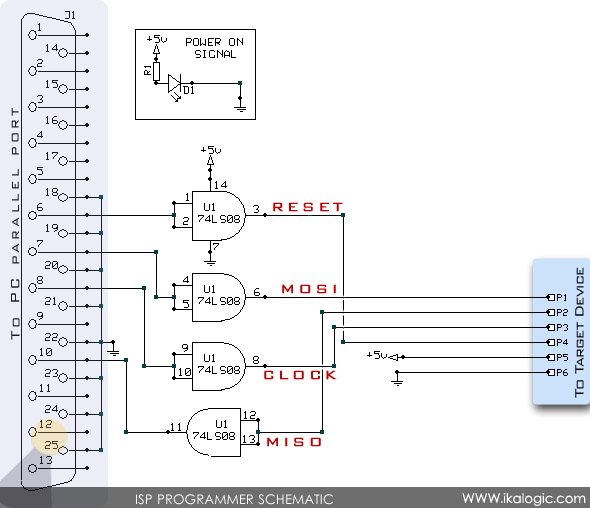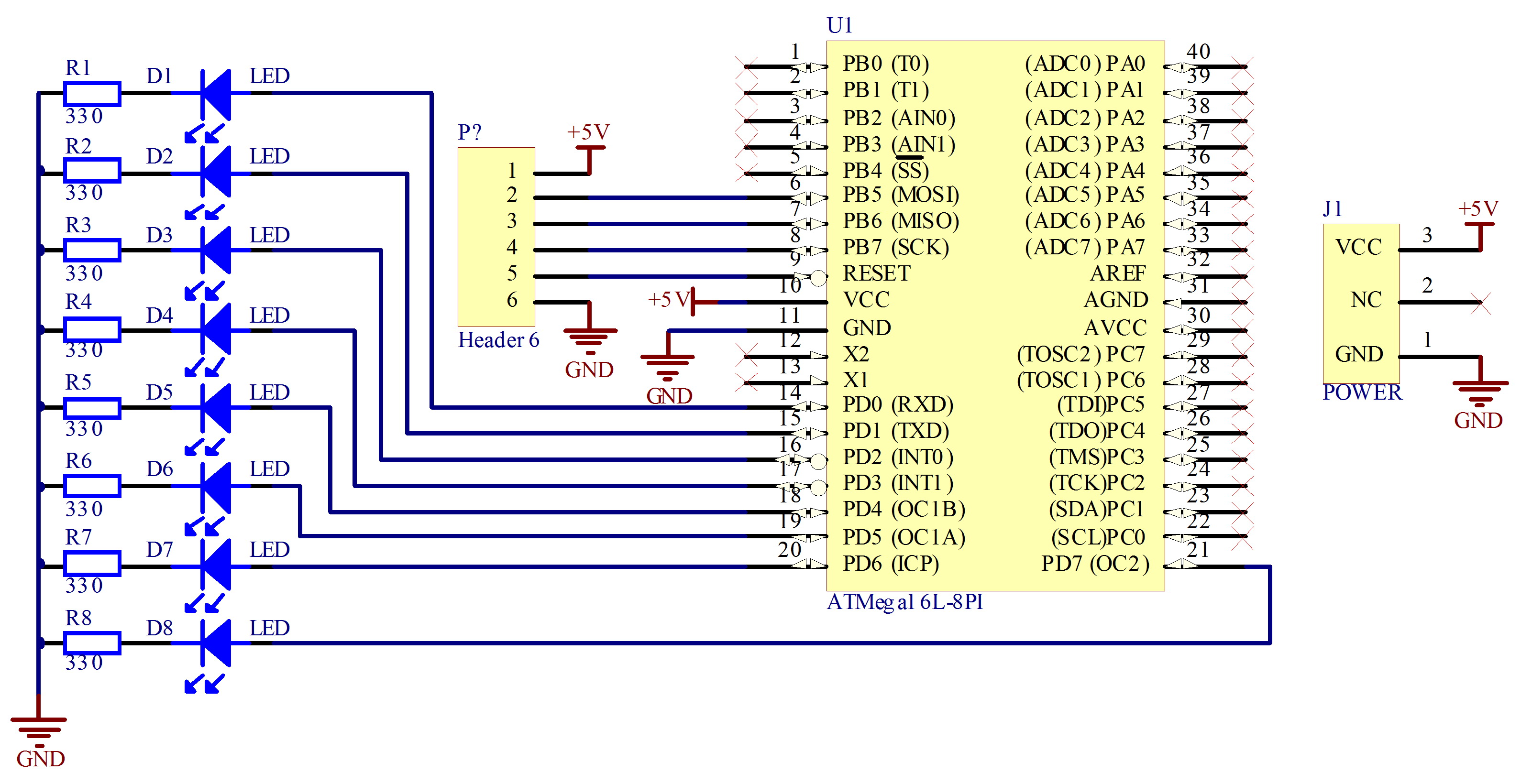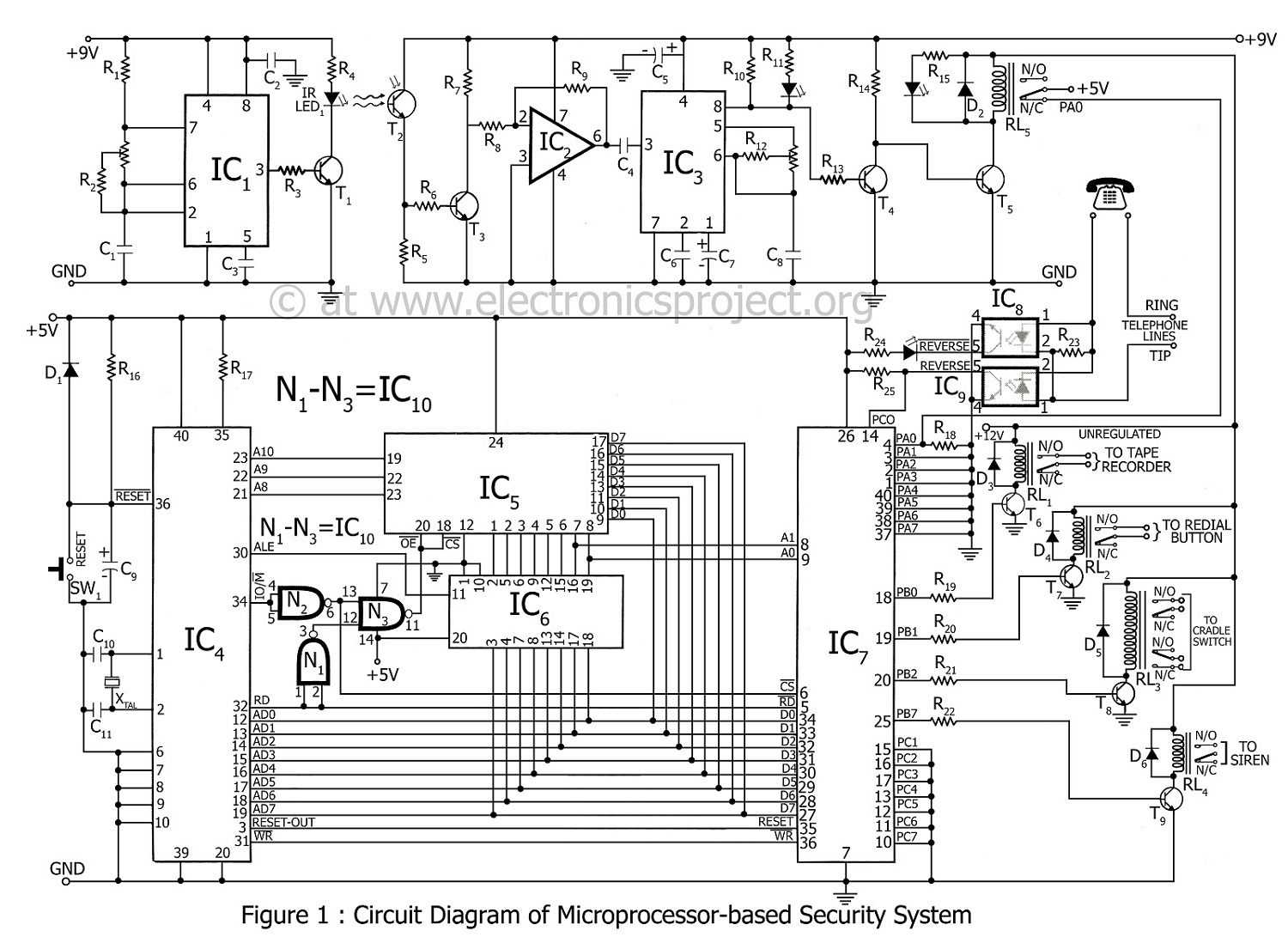
In System Programming (ISP) for ATMEL chips

In-System Programming (ISP) allows for the serial programming of a microcontroller while it remains on the board, eliminating the need to remove the chip. This method provides a straightforward and cost-effective solution for programming and debugging microcontroller-based projects, whether for beginners or experienced users of ATMEL microcontrollers. ISP proves particularly beneficial when fine-tuning delays, frequencies, or other parameters through trial and error, which can be time-consuming otherwise. Typically, the flash memory of an ATMEL microcontroller is programmed via a parallel interface that transmits data byte by byte using multiple lines for data, address, control, and clock inputs. In contrast, ISP utilizes only four lines, with data transferred similarly to an I2C interface, where bits are sent sequentially over the MOSI (data input) line, synchronized by clock pulses on the SCK (clock input) line. The MISO (data output) line serves for reading and code verification, outputting data from the microcontroller's flash memory. The RST pin, which normally resets the device, also activates the MOSI, MISO, and SCK pins for ISP when set to HIGH (5V); if RST is LOW (0V), the microcontroller runs its program normally and these pins function as P1.5, P1.6, and P1.7. The code memory array can be programmed via the serial ISP interface with RST held at VCC. The serial interface comprises the SCK, MOSI (input), and MISO (output) pins. Upon setting RST high, the Programming Enable instruction must be executed prior to any other operations. A Chip Erase operation is necessary before reprogramming, which resets all memory locations in the code array to FFH. An external system clock can be supplied at pin XTAL1, or a crystal can be connected across XTAL1 and XTAL2. The maximum serial clock (SCK) frequency should not exceed 1/16 of the crystal frequency; for a 33 MHz oscillator, this limits SCK to 2 MHz. The provided information serves as a foundation for building and utilizing this straightforward programming device. The hardware interface can be constructed based on a simple schematic. A 74LS08 IC was used in the programmer, but a 74HC08 or 74HCT08 IC is recommended for enhanced safety and performance, particularly for longer cable runs. The circuit design is largely self-explanatory, with the four AND gates functioning as buffers to isolate the parallel port. Careful attention to detail is necessary when producing the PCB, particularly since pins 14 to 25 of the parallel port are located on the component side of the board and cannot be soldered. Fortunately, only the Ground (0V) pins (18 to 25) are required, which can be connected to the board using a single jumper wire.
The ISP process is a critical aspect of microcontroller programming, enabling efficient and flexible updates without requiring physical access to the chip. The four lines used in ISP—MOSI, MISO, SCK, and RST—form a compact interface that simplifies connections while maintaining functionality. The choice of components, such as the 74HC08 or 74HCT08, enhances the robustness of the circuit, allowing for longer transmission lines without signal degradation. The use of buffers in the design protects the parallel port from potential damage, ensuring reliable operation during programming sessions.
The PCB layout must be meticulously designed to accommodate the parallel port connections and ensure that the necessary ground connections are properly established. The inclusion of a jumper wire for grounding simplifies the assembly process while maintaining the integrity of the circuit. Additionally, the placement of the crystal oscillator or external clock source is crucial for achieving the desired timing characteristics, which directly influence the programming speed and reliability.
In conclusion, the ISP method provides a practical approach to microcontroller programming, combining simplicity and effectiveness. The detailed understanding of the circuit operation, along with careful attention to component selection and PCB design, is essential for successfully implementing an ISP solution in microcontroller projects.ISP is a way to serially program your microcontroller, while it resides in its place, in other words, without removing the chip from your board. Whether you`re just starting in the ATMEL microcontrollers, or you`re familiar with it, ISP (In System Programming) will provide you a simple and affordable home made solution to program and debug your microcontroller based project.
Sometimes, ISP can become very useful, when adjusting some delays, frequencies or any other values that you would intend to find by trial and error. a process that would otherwise take too much time. Normally, the flash memory of an ATMEL microcontroller is programmed using a parallel interface, which consists of sending the data byte by byte (using eight independent lines for the data, and another bunch of lines for the address, the control word and clock input).
On the other hand ISP is performed using only four lines, and literally, data is transferred through two lines only, as in a I2C interface, where data is shifted in bit by bit though. MOSI(data input) line, with a clock cycle between each bit and the next (on the SCK(clock input) line).
MISO (data output)line is used for reading and for code verification, it is only used to output the code from the FLASH memory of the microcontroller. The RST(used to activate the serial Programming) pin, which is normally used to reset the device, is also used to enable the three pins (MOSI, MISO and SCK) to be used for ISP simply by setting RST to HIGH (5V), otherwise if RST is low (0V), your program start running and those three pins, are used normally as P1.
5, P1. 6 and P1. 7. The Code memory array can be programmed using the serial ISP interface while RST is pulled to VCC. The serial interface consists of pins SCK, MOSI (input) and MISO (output). After RST is set high, the Programming Enable instruction needs to be executed first before other operations can be executed. Before a reprogramming sequence can occur, a Chip Erase operation isrequired. The Chip Erase operation turns the content of every memory location in the Code array into FFH. Either an external system clock can be supplied at pin XTAL1 or a crystal needs to be connected across pins XTAL1 and XTAL2.
The maximum serial clock (SCK) frequency should be less than1/16 of the crystal frequency. With a 33 MHz oscillator clock, the maximum SCK frequency is 2 MHz. This is as deep as i got in the ISP process, as i am using a ready made software that will handle the transfer protocol. Some more detailed information about the ISP functioning can be found at and at. But this is all you need to know to build and use this extra simple programming device. Now that you know some theory about the ISP, you should be ready to build the hardware interface. As you will soon discover, it maybe the simplest circuit that will find in this web site! The schematic above indicates a 74LS08 IC, and I did build the programmer with a 74LS08 IC. However, using a 74HC08, or even better a 74HCT08 IC would be much safer, will give you a better performance and allow you to use a longer cable.
The circuit almost talks for itself, the only part that may need some explanation, is the four AND gates. Connecting both two inputs of the AND gates as shown makes it act like a buffer, to protect the parallel port (Shortly, a buffer is a device that will isolate two circuits).
A glance at this pictures may be enough to understand how the PCB is mounted and welded to the parallel port connector. To achieve this, some precision have to be taken in account when producing the PCB. Note than PINs 14 to 25 of the parallel port are on the Components side of the board, and thus cannot be welded.
but luckily, from all those pins we only need the Ground (0V) (pins 18 to 25), which were all connected to the board, simply through a single jumper wire. (you can notice it, it`s the orange wire in the s 🔗 External reference
The ISP process is a critical aspect of microcontroller programming, enabling efficient and flexible updates without requiring physical access to the chip. The four lines used in ISP—MOSI, MISO, SCK, and RST—form a compact interface that simplifies connections while maintaining functionality. The choice of components, such as the 74HC08 or 74HCT08, enhances the robustness of the circuit, allowing for longer transmission lines without signal degradation. The use of buffers in the design protects the parallel port from potential damage, ensuring reliable operation during programming sessions.
The PCB layout must be meticulously designed to accommodate the parallel port connections and ensure that the necessary ground connections are properly established. The inclusion of a jumper wire for grounding simplifies the assembly process while maintaining the integrity of the circuit. Additionally, the placement of the crystal oscillator or external clock source is crucial for achieving the desired timing characteristics, which directly influence the programming speed and reliability.
In conclusion, the ISP method provides a practical approach to microcontroller programming, combining simplicity and effectiveness. The detailed understanding of the circuit operation, along with careful attention to component selection and PCB design, is essential for successfully implementing an ISP solution in microcontroller projects.ISP is a way to serially program your microcontroller, while it resides in its place, in other words, without removing the chip from your board. Whether you`re just starting in the ATMEL microcontrollers, or you`re familiar with it, ISP (In System Programming) will provide you a simple and affordable home made solution to program and debug your microcontroller based project.
Sometimes, ISP can become very useful, when adjusting some delays, frequencies or any other values that you would intend to find by trial and error. a process that would otherwise take too much time. Normally, the flash memory of an ATMEL microcontroller is programmed using a parallel interface, which consists of sending the data byte by byte (using eight independent lines for the data, and another bunch of lines for the address, the control word and clock input).
On the other hand ISP is performed using only four lines, and literally, data is transferred through two lines only, as in a I2C interface, where data is shifted in bit by bit though. MOSI(data input) line, with a clock cycle between each bit and the next (on the SCK(clock input) line).
MISO (data output)line is used for reading and for code verification, it is only used to output the code from the FLASH memory of the microcontroller. The RST(used to activate the serial Programming) pin, which is normally used to reset the device, is also used to enable the three pins (MOSI, MISO and SCK) to be used for ISP simply by setting RST to HIGH (5V), otherwise if RST is low (0V), your program start running and those three pins, are used normally as P1.
5, P1. 6 and P1. 7. The Code memory array can be programmed using the serial ISP interface while RST is pulled to VCC. The serial interface consists of pins SCK, MOSI (input) and MISO (output). After RST is set high, the Programming Enable instruction needs to be executed first before other operations can be executed. Before a reprogramming sequence can occur, a Chip Erase operation isrequired. The Chip Erase operation turns the content of every memory location in the Code array into FFH. Either an external system clock can be supplied at pin XTAL1 or a crystal needs to be connected across pins XTAL1 and XTAL2.
The maximum serial clock (SCK) frequency should be less than1/16 of the crystal frequency. With a 33 MHz oscillator clock, the maximum SCK frequency is 2 MHz. This is as deep as i got in the ISP process, as i am using a ready made software that will handle the transfer protocol. Some more detailed information about the ISP functioning can be found at and at. But this is all you need to know to build and use this extra simple programming device. Now that you know some theory about the ISP, you should be ready to build the hardware interface. As you will soon discover, it maybe the simplest circuit that will find in this web site! The schematic above indicates a 74LS08 IC, and I did build the programmer with a 74LS08 IC. However, using a 74HC08, or even better a 74HCT08 IC would be much safer, will give you a better performance and allow you to use a longer cable.
The circuit almost talks for itself, the only part that may need some explanation, is the four AND gates. Connecting both two inputs of the AND gates as shown makes it act like a buffer, to protect the parallel port (Shortly, a buffer is a device that will isolate two circuits).
A glance at this pictures may be enough to understand how the PCB is mounted and welded to the parallel port connector. To achieve this, some precision have to be taken in account when producing the PCB. Note than PINs 14 to 25 of the parallel port are on the Components side of the board, and thus cannot be welded.
but luckily, from all those pins we only need the Ground (0V) (pins 18 to 25), which were all connected to the board, simply through a single jumper wire. (you can notice it, it`s the orange wire in the s 🔗 External reference





